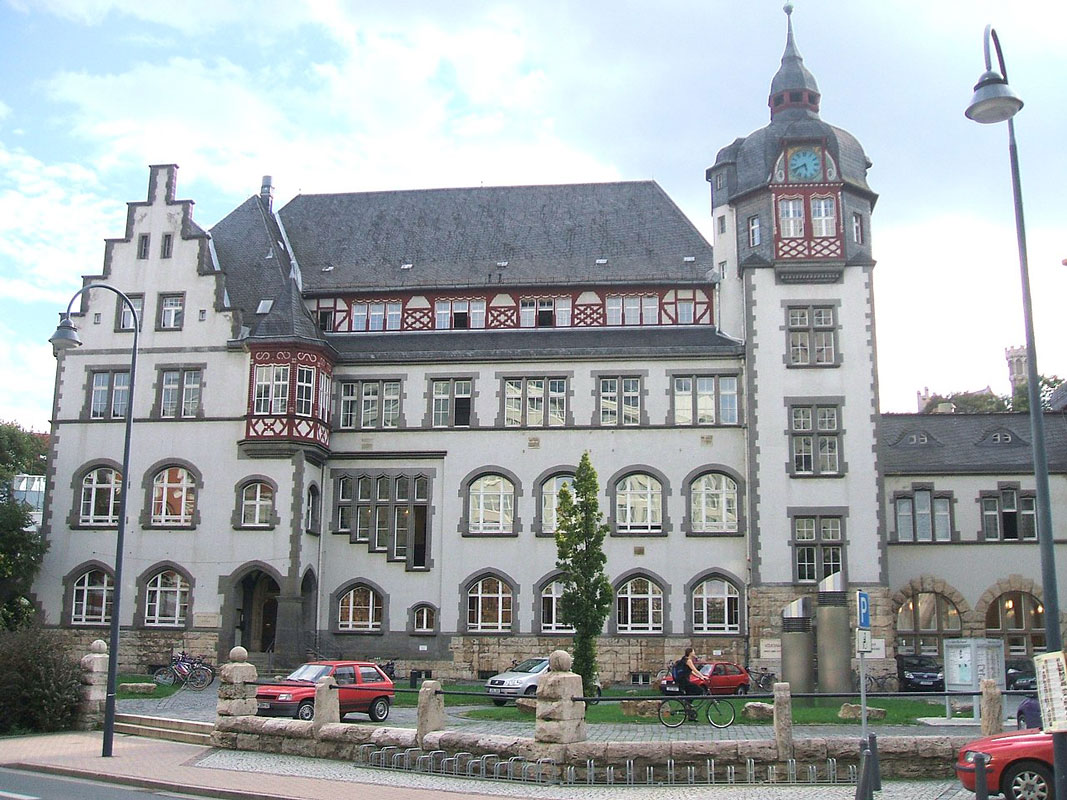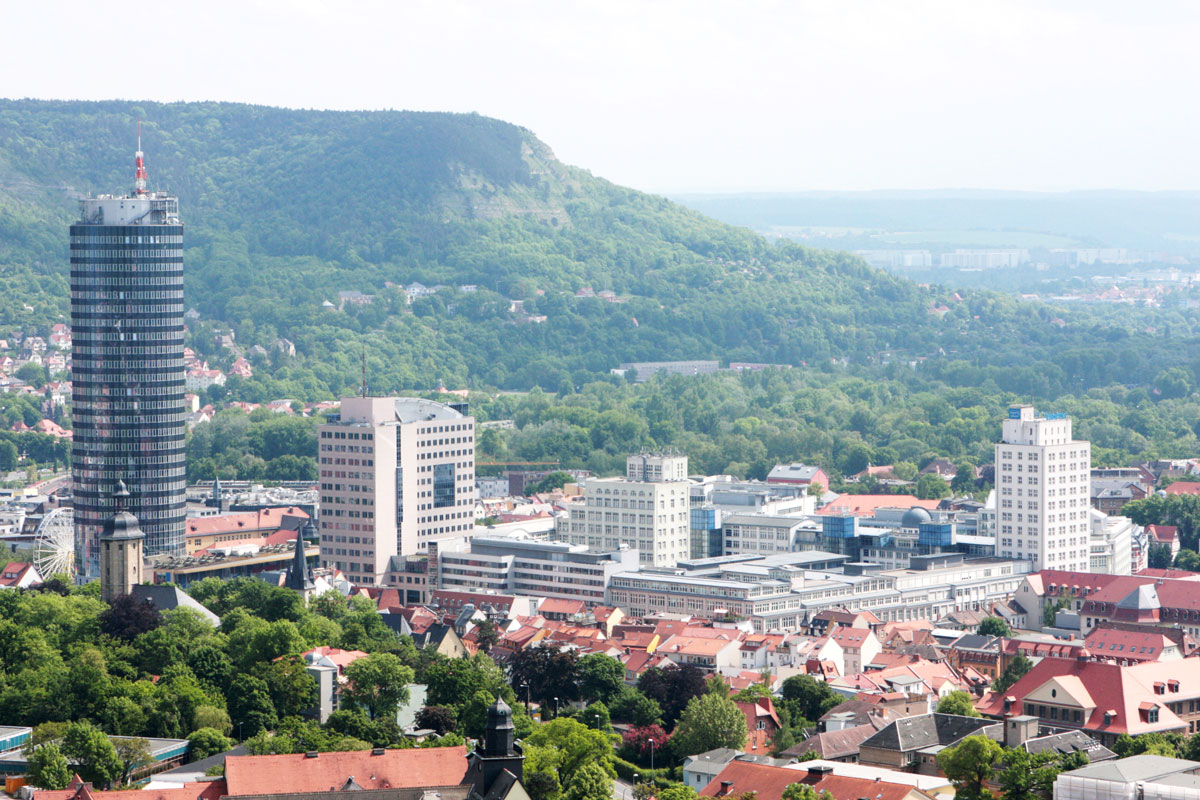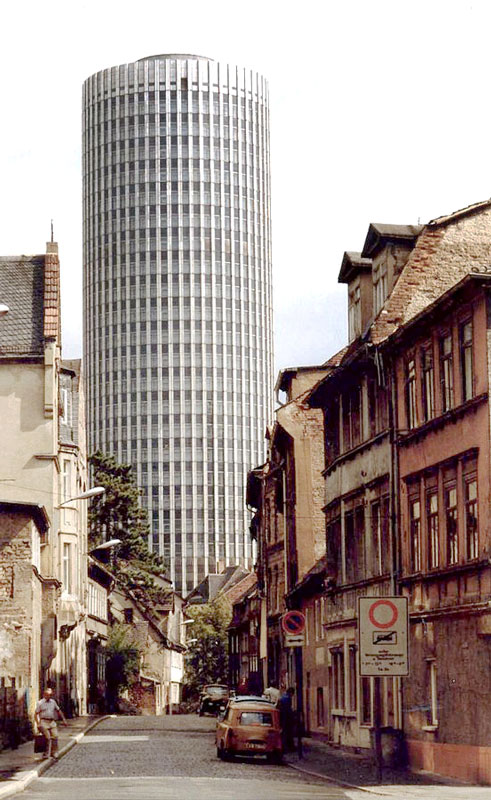Jena – Germany’s City of Glass

Jena is a small city with a magnificent past in the former East Germany, being a traditional centre for literary get-togethers, scientific research and philosophical contemplation. I readily accepted an invitation from the Department of Optics, Friedrich Schiller University, Jena, while working at the celebrated Padova University, Italy, as an ICTP Fellow in 1994. As my research there was basically on ‘nonlinear optics’, I wished to visit the city of Goethe and Schiller, famous for scientific exploration in optic glasses and now a city of affluent centres of academic research in united Germany. Padova University is one of the oldest universities of Europe and like Jena, it has a long tradition and great skill in the manufacture and working of glass.
It is believed that glass was first manufactured by ancient Egyptians about 4,000 years ago but the scientific exploration of glass is quite young and closely connected with Jena. Fraunhofer, Goethe, Zeiss and Schiller are famous names in this field.
On March 28, 1829, Goethe wrote to Johann Wolfgang Döbereiner, a renowned German chemist and a professor of chemistry at the University of Jena, “It would be most important to find the relationship between the refraction and dispersion of light in glass… and I should be pleased to contribute a modest funding.” Professor Döbereiner is best known for work that prefigured the periodic law of chemical elements and for inventing the first lighter, which was known as the Döbereiner’s lamp. The main episode in the history of optical glass as a practical product is based on the pioneering research conducted by the persons from Jena — the chemist Otto Schott, physicist Ernst Abbe and technician Carl Zeiss. The three closely worked together at the “Zeiss Works” of Jena, the first enterprise in Germany and probably in the world for manufacturing high-precision optical instruments. Surprisingly, the glorious past of this great city of Goethe and Schiller, which has a rich tradition in German literature, seems to have been forgotten. Probably its prolonged period of isolation from the then West Germany and the rest of the world cut it off from public memory.
The Jena University has given six Nobel Prize winners, the most recent being Herbert Kroemer who won the Nobel Prize for physics in 2000.
Jena is connected by the Munich-Berlin rail track of the German railway. I boarded the train from the Munich Central Station, a place for a short wait and of course, a can of German beer, which did not predict that the train journey would be so historically enlightening and educative. The Munich-Berlin railway track was laid in 1874. According to my co-passengers, the portion of the rail track under West Germany was maintained very well, which was obvious but that under East Germany, it was neither renovated nor maintained enough to withstand the pressure of fast trains. The disparity between these two parts of Germany was apparently present in spite of a bigger flow of economic prosperity from the West to the East, most visible in funding to the universities of the Eastern part of Germany. For instance, the researchers who were involved with the Optics Department of Friedrich Schiller University at Jena completed their masters’ degree from different universities of Western Germany — Heidelberg, Hamburg, Munich, Gottingen, Frankfurt, etc. Obviously, the lack of funds at their own universities in Western part of Germany made them travel to Jena.
Though lenses were known for thousands of years in the form of water-filled glass bottles used as burning glasses, the first use of convex-shaped glass lenses as eyeglasses was made by the end of 13th century by Alessandro della Spina of Pisa and independently by Salvino D’Armati of Florence. I felt honoured to receive this invitation from Jena as it came from the Optics department with which Professor Ernst Abbe, the father of modern optics, was associated. The university was established in 1558 and is counted among the ten best universities in Germany. It has given six Nobel Prize winners, the most recent being Herbert Kroemer who won the Nobel Prize for physics in 2000. It was renamed after the poet Friedrich Schiller who was a professor of philosophy when Jena attracted some of the most influential minds at the turn of the 19th century.
Jena lies in a hilly landscape in the east of Thuringia province, within the wide valley of the river Saale. Due to its rocky landscape, varied substrate and mixed forests, it is known for the wide variety of wild orchids. The economy of the city is based on the high-technology industry and research. The optical and precision industry is the leading branch to date, while software engineering, other digital businesses and biotechnology are of growing importance.
I reached Jena at 11pm, with the temperature being 10 deg C below zero, and stayed in the city for a month.
Walking through the snow-covered roads, I came across the 400- feet high university tower, the most prominent landmark in Jena. Another important building was “Volkshaus”, which was one of the first free educational institutions in Germany. It was built with funds from the Carl Zeiss Foundation and opened in 1903. From June 1922 to October 1924, the Volkshaus-Jena housed the first exhibition of optical devices. In 1846 Zeiss opened a workshop in Jena for producing microscopes and other optical instruments.

At the beginning of 20th century, Jena was thriving as a result of the overwhelming success of Zeiss’ works. It was the biggest industrial centre of Germany where an excellent coordination of science and engineering took place by thousands of scientists, skilled engineers and researchers working together. At the university a new era of intellectual breakthrough took place.
Surprisingly, this small town magnificently located between numerous hills which extend over 10km on both banks of the Saale River, was repeatedly attacked by enemies causing terrible devastation to the villages and towns. The warring factions often marched through Jena because of its central geographical location. Sometimes, Jena was overrun by Swedish troops. The famous Jena battle which took place on October 14,1806, between French troops under Napoleon Bonaparte and Prussian Army regiment ended in the devastating defeat of the Prussian troops and their allies. The French continued to occupy Jena and subjected it to severe plundering even after the battle of October 14. Thousands of French soldiers rampaged through the town, rushed their way into houses and forced the townsfolk to hand over the provisions and valuables. In 1813, Germany became free from the French occupation.

Jena was destroyed during the final phase of World War II. In February and March 1945, bombing attacks caused great damage to the city. In July 1945, the city became a part of the Soviet Union. The most shocking incident for the people of Jena was the demolition of the beautiful squares and historical buildings of the old town of Jena. In 1972, for reasons of prestige, the 120-metre high “Zeiss Research Tower” was built. That tower is now a property of the Jena University and known as the “Jena University Tower”.
The Optical Museum at Carl Zeiss Platz 12 is fascinating. It was opened in the 1920s. Here the historical developments of the microscope, telescope and optics for medical technology are shown through various displays arranged chronologically. Instruments for long-distance viewing of the earth, geodesic devices and photographic lenses are all on display. The Zeiss planetarium of Jena is probably the oldest planetarium on earth. It was opened to the public in 1926 as the first planetarium in the world. In it, heavenly bodies are projected on to an artificial sky, creating a fascinating impression of space and time for the observers. Today there are more than 40 Zeiss museums all over the world, but the oldest one in Jena still remains a masterpiece.
The writer is member of RC Calcutta North Suburban, RID 3291

